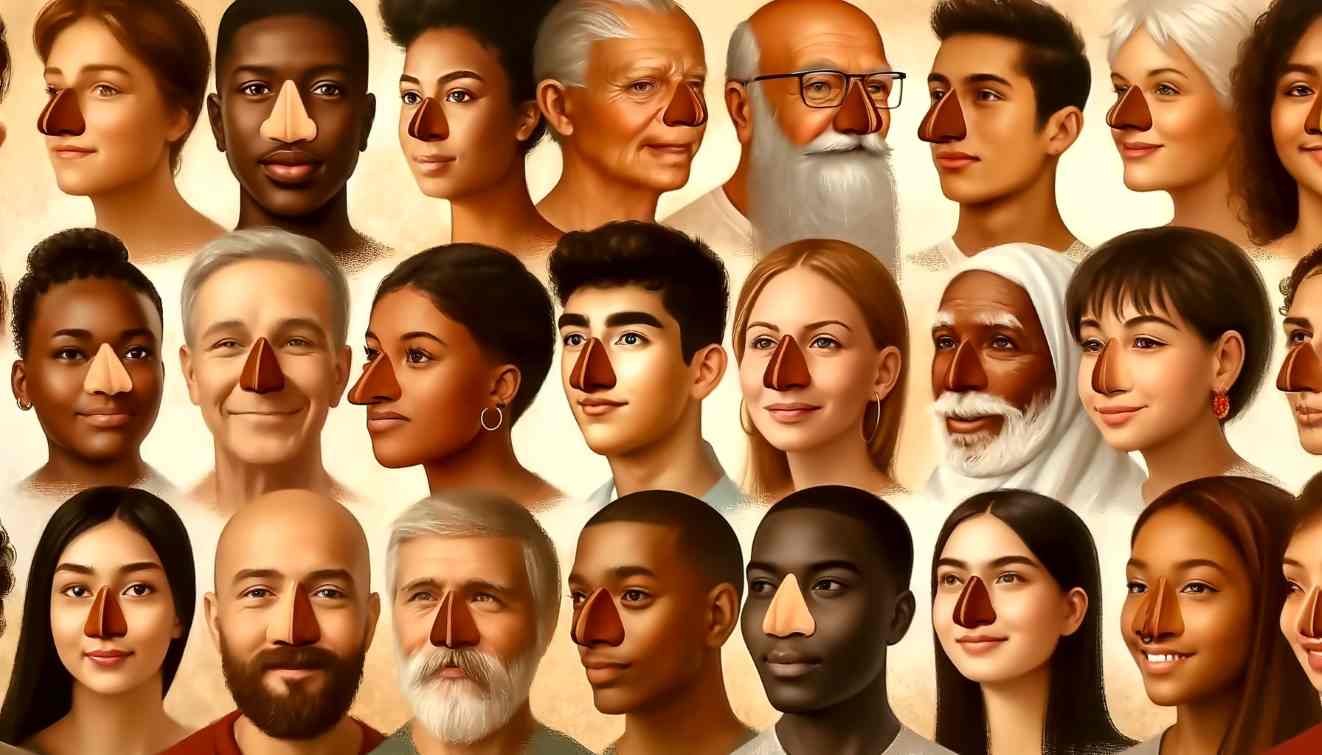Introduction of the Hooked Nose
In the tapestry of human diversity, the hooked nose stands out as a unique and often misunderstood feature. This nose shape has been shrouded in all sorts of myths and stereotypes, impacting the perception of persons carrying it since immemorial. This is a foray delving into these layers to proffer a clearer understanding of what a hooked nose signifies and dissolve common myths and stereotypes head-on.
What is a Hooked Nose?
Before we delve into its cultural and social aspects, let’s first learn what a hooked nose is. Medically termed a ‘convex’ or ‘aquiline’ nose, it features a prominent bridge that often projects or bends severely.
People of different ethnic backgrounds all exhibit this shape, representing it as part of natural human genetic variation.
Historical Perspectives
The hooked nose has been worshipped and condemned throughout history. The aquiline nose was a sign of leadership and strength in ancient Rome; it was seen on many emperors and warriors in the statues from that time. Later in the centuries, it has come to gain negative stereotypes, especially about some ethnic and religious groups, especially in Europe.
Breaking Down the Myths
However, maybe the most common myth that always surrounds the hooked nose is its association with specific character or ability traits. Most have no basis, even if it would be scientific at best. For example, there is a trend to associate a person’s character or intellect with the shape of their nose.
These assumptions are purely based on societal prejudices and have no basis.
Stereotypes and Their Impact
Stereotypes based on hooked noses have caused a lot of harm to some communities, mainly for the basic fact that they are usually based on ignorance and prejudice. We should underline that such stereotypes are baseless and defamatory, fostering a culture of misunderstanding and intolerance.
The Beauty of Diversity
The hooked nose, generally a definition of horror, has recently been explained for its aesthetic value in all features, different from those of their own. This goes on to show a part of a more considerable current of celebrating diversity, and the unique characteristic in an individual makes them who they are.
Finding beauty in a hooked nose challenges the conventional face of beauty to give more people a chance to feel beautiful.
Representation in Media and Art
Generally, the media and art have always portrayed hooked noses in a biased manner towards negative representations. In some instances, this tide is turning as portrayals of hooked noses become more diverse, perhaps even positive.
Far from not helping to break stereotypes, it helps in significant ways in fostering self-acceptance amongst the individuals bearing this nose shape.
The Role of Genetics
Genetic factors intricately determine the shape of the nose through a complex interplay. The hooked nose is just one of the many variations from such great and diverse genetic wealth. Understanding this can dispel any myths associating such an appearance with bizarre behavior or abilities.
Personal Stories of the Hooked Nose
Experiences and stories of people with a hooked noses always differ. While some must have suffered from teasing or had a low self-esteem issue, others have pridefully presented their unique feature. These personal stories help put meaning into how physical features affect life and perceptions.
Beyond the Surface
However, one should remember that a nose is just a form of the nose, nothing more. If anything, judging a person by appearance is unfair and even relatively uninteresting, as the personality, skills, and life history can be much more interesting, filled with many unpredictable events.
Conclusion of the Hooked Nose
Exploring the World of Hooked Noses speaks volumes about diversity in men, stereotypes, and perceptions of beauty. From myths to facts and personal stories, you can get the most nuanced view possible of what it means to have this defining feature. The ultimate takeaway is a call for greater acceptance and appreciation of diversity in all its forms. That is a hooked nose, unique in its contour and with historical baggage only serving as a reminder of how some things are superficial details. It is a call to celebrate diversity, challenge stereotypes, and see inherent beauty in all forms of human difference. Such an attitude will help us build an infinitely more accepting and understanding world. In this environment, we will appreciate every physical trait, such as the hooked nose, for its value within the varied portrayal of our collective human population.

